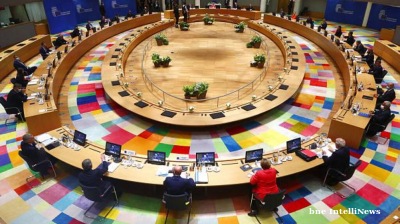Romania’s GDP expressed in constant prices increased by 5.9% y/y, the statistics office reported in a flash estimate on August 16.
The growth rate accelerated from 5.7% y/y in Q1 and on a broader perspective it has constantly gained momentum since Q3 2016 when GDP increased by 4.3% y/y. The seasonally adjusted GDP increased by 1.6% q/q in Q2, after the 1.8% q/q rise in Q1.
While the improvement in the external conditions contributed to the record growth in Q1-Q2, the domestic fiscal stimulus remains the main driver, generating at the same time concerns related to sustainability and predictability.
Industry’s contribution to Q2 GDP growth improved from 1.5pp in Q1, reflecting stronger external demand amid economic improvement in EU. But the main growth driver on the GDP formation side has certainly remained the sector of services, where robust demand (propelled by households’ disposable income) is allowing firms to achieve wide profit margins and larger turnover.
The exports of the companies in ITC industry (a significant and sustainable contributor to GDP growth recently) remained constant in annual terms in H1, according to the current account data. The contribution of the sector of services to the GDP growth was 3.7pp in Q1 and retail sales – taken as a benchmark for the intensity of demand – accelerated to 8.6% y/y in Q2 from 6.9% y/y in Q1. Separately, the contribution of the sector of construction turned negative in Q2, as the construction volume index contracted by 12% y/y in the quarter.
The government’s 5.2% target for this year’s GDP growth looks at this moment realistic and it might actually be exceeded but at the cost of the accumulation of twin deficits. Fiscal consolidation measures might jeopardise the GDP growth in 2018, when the government expects 5.5% GDP growth.
Furthermore, the budget deficit will exceed the 3% of GDP threshold even in the absence of any significant capital expenditure spending. Civil engineering works further contracted by 30% y/y in q2 (after a 21% y/y drop in Q1) and the capital expenditures from the national budget contracted by 19% y/y.
On the external balance side, the net imports of goods expanded by 50% y/y in q2, after the 21% y/y increase in Q1 and the current account balance widened by 40% y/y in H1 to 1.6% of GDP solely as an effect of the direct payments to farmers being paid during H1 in 2017 (as opposed to H2 last year).
The domestic balances are also deteriorating, with prices gaining ground and the central bank expressing concerns in regard to the lack of fiscal predictability.
Data

Belarus reports modest GDP growth 1.6% in 8M25
Belarus’ economy expanded by 1.6% in the period from January to August 2025, according to preliminary estimates from the National Statistical Committee, state news agency BelTA reported on 17 September.

Most Ukrainians reject Russian peace plan, back continued resistance, poll shows
An overwhelming majority of Ukrainians remain committed to resisting Russia’s invasion and reject Moscow’s latest peace proposals, even as many recognise that the war is unlikely to end soon, according to a new survey by the KIIS.

Young Bulgarians turn to stocks over real estate, survey shows
Real estate remains the most popular option overall but younger investors are leading a shift towards stock market investing, says survey commissioned by Revolut.

State of global democracy - Statista
The Economist Democracy Index rates countries on the state of their governing system each year. In the latest edition, corresponding to the year 2024, only 25 countries (6.6% of the world's population) have been rated as "full democracies"



